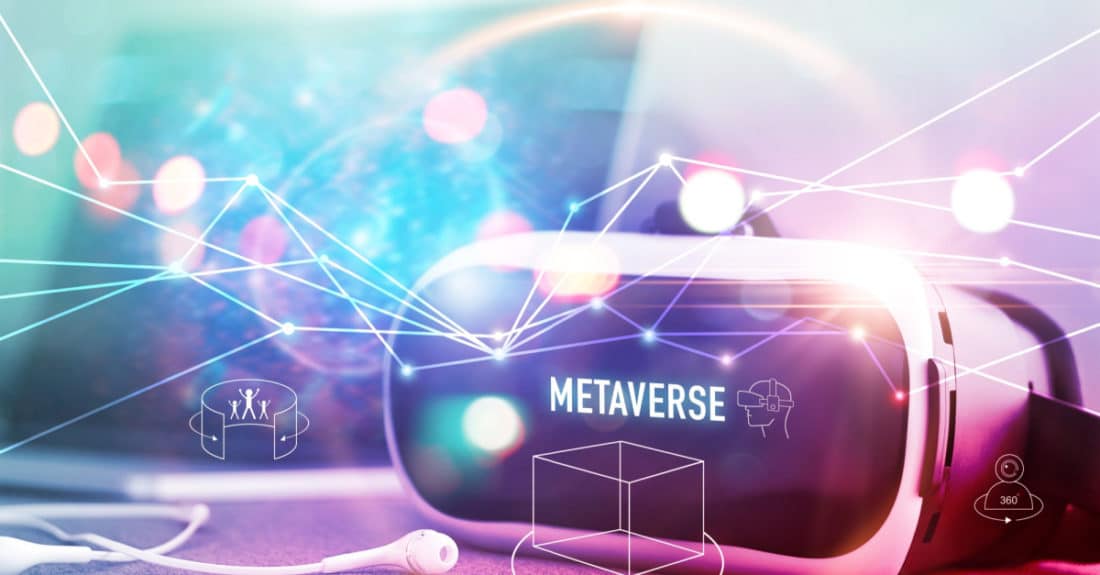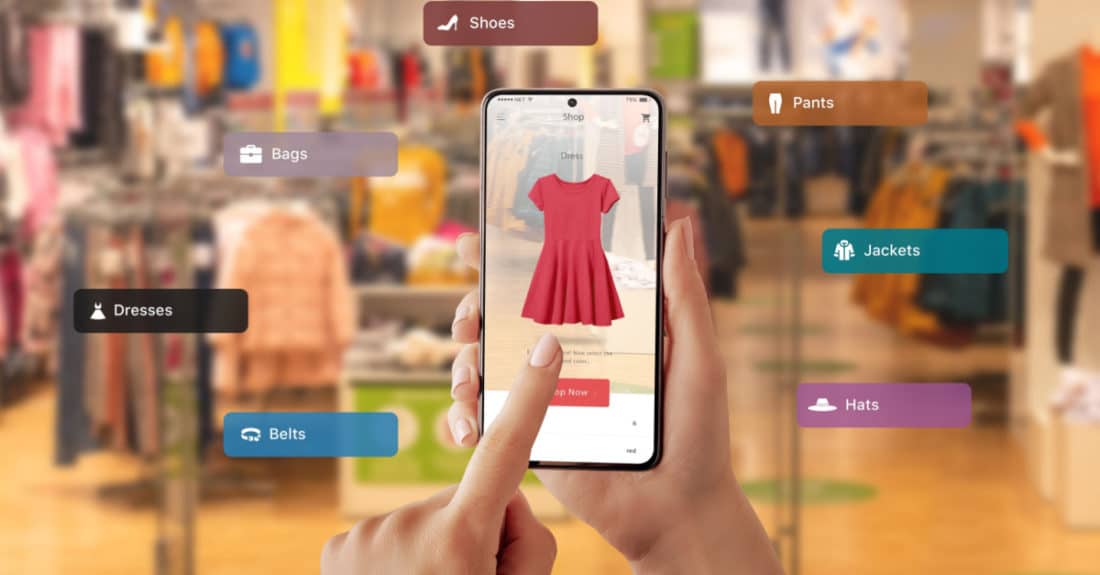Once a distant sci-fi concept, the metaverse is now a reality for your business. While it continues to make headlines, this next generation of digital interaction and entertainment is still in its infancy.
Enterprise-level first adopters offering bespoke virtual experiences, such as Nike and Gucci, are paving the way for what’s next. However, for many brands, enough remains unknown to make full pivots toward a metaverse-first strategy. The earliest stages of any innovation’s hype cycle are always littered with false starts, predictions gone wrong, and missing nuances. It’s normal that most of what the metaverse will be is still undecided.
What is known is that consumers’ behaviors and desires are changing. Younger generations and consumers post-pandemic want more sophisticated, personalized interactions and experiences from the comfort of their own homes. Eventually, the metaverse and its technologies will meet and exceed these needs.
Marketers have to work harder to identify and speak to their audiences while measuring what’s working and what’s not. Add increasing concerns about data privacy spurring legislation and changes in platform policies—especially as they relate to the use of cookies—and it can be a big challenge to see the full picture of your marketing impact today let alone tomorrow.
While holistic and accurate measurement feels unreachable, every business has options to know what’s working, why, and what to optimize for even better performance. In this article, we’ll dive deeper into the metaverse and what the larger shifting landscape means for marketers working to measure effectiveness and record real business results.
What’s Considered the Metaverse?

The metaverse, simply put, is the next generation of digital interaction and entertainment. While the term “metaverse” isn’t new, its meaning expands and evolves alongside its technologies. Representing a significant shift in how humans interact with technology, the metaverse conceptualizes virtual spaces and realities.
“It’s in its early stages…and growing.”—Michael Candullo, Executive Vice President, Digital Operations at Amsive Digital
The world’s largest platforms, tech giants, and entertainment companies are racing to lead this latest digital evolution. Which companies will rise and fall to build the needed virtual and technical components that make up this frontier? The next decade will answer this question and more. Global brands such as Selfridges, JP Morgan Chase, and NASCAR are some of marketing’s first adopters within this unfolding landscape.
For every brand today, reaching and engaging customers within complex consumer journeys includes many unique touchpoints. As metaverse adoption ramps up, consumers will work, play, shop and socialize in these virtual spaces, adding to their journeys.
The Reality of the Metaverse is Fragmented

While the metaverse sounds all-encompassing, the current reality of this virtual ecosystem is being built piece by piece with a mix of platforms, hardware, and digital currencies. Throughout the next decade, expect platforms to maneuver for market share, headsets, and other technology to vie for consumer attention, and for cryptocurrencies and NFTs (non-fungible tokens) to grow in abundance.
Grayscale, a subsidiary of Digital Currency Group (DCG), which also owns CoinDesk, asserts that the “metaverse may represent an over $1 trillion annual revenue market.” However, no clear timeline was given for when this could occur. Their report illustrates the current state of the metaverse that change is coming and details are yet to be revealed.
Today, the investment to build the tools and technologies of the metaverse is significant. However, that isn’t stopping some of the world’s largest companies from jockeying to claim the top spots. Companies to watch include Microsoft, Meta, Apple, Epic, Qualcomm, Nvidia, and Valve.
Who Owns the Metaverse Hardware Scene?
Display technologies include headsets, smartphones, eyewear, and other devices from several top companies. The Oculus Quest 2 VR headset from Meta Quest is currently popular with 53.5% of shipment share worldwide. The newest generation of Meta Quest headsets launched in October of 2022.
However, Apple is reportedly prototyping a VR/AR headset rumored to be released in 2022 with sales available in 2023. The company has been developing this device since 2015 and had previously hinted at debuting it in 2021. When Apple makes its move, it may be the first of many headsets which could eventually replace the iPhone.
While much is still unknown about the future of the metaverse, its technologies are already impacting our world today.
How AR/VR can Bridge the Tactile Gap for E-Commerce Customers

Consumers are demanding better-connected shopping experiences that blend in-store and online benefits. Broadly, customer advocacy for advanced digital customer experience (CX) improvements has increased, especially since 2020.
“The goal for retail brands is to blend online convenience with in-store experiences.”—Sarah Gray, Group Director, SEO & Digital Content at Amsive Digital
AR is one way brands can better connect customer experiences while improving conversion rates. Nielsen IQ asserts AR/VR technology “holds the strongest potential” for augmenting the consumer journey and escalating adoption. At the moment, these technologies are still far from perfect. Expect the next few years to set the pace for the next generation of these technologies.
Real World E-Commerce Solutions from the Metaverse
AR can provide retail brands with an e-commerce solution for a familiar customer pain point. How do I know the clothing I’d like to purchase will fit me?
It’s a question as old as online shopping—and a significant barrier to purchasing. Brands that offer customers the ability to ‘try on’ clothes virtually provide a turnkey solution to this issue; they’ll also save money on returns.
Seventy-percent of consumers feel that finding clothes online that fit is really difficult, making returns a $550 billion dollar problem for retail businesses.
While apps using AR for jewelry and accessories have become commonplace, building the computer technology needed to create 3D clothing as it would move on the human body in real-time is more challenging. However, technology such as this is improving and will eventually allow fashion brands to offer this service to their customers. It’s a win-win for brands looking to increase conversions while decreasing return rates. This can build additional brand affinity as customers feel more confident in their purchasing decisions.
For example, Meta shared a case study for Breitling, a luxury Swiss watchmaker brand, which saw a 3.3 lift in purchase consideration from its AR ads on Facebook and Instagram.
Using Meta’s Facebook AR Ads
Brands can already run AR ad units on Facebook across smart mobile devices. There is a practical and immediate application of AR for your brand today; the only thing you need is new ad creative.
AR ad units can operate with the same scale and audiences with the exception of conversion objective campaigns. Utilizing this ad unit is a great way to enter new areas that aren’t already saturated with numerous advertisers. Amsive Digital is here to help conceptualize, create, and track AR ads, adding another element to your optimal media mix.
Optimize Your Media Mix With Audience Insights
The optimal media mix varies from brand to brand, but analyzing and adjusting your media mix can help you ensure that you’re getting the most out of your ad spending no matter where you’re serving them. Insights from your media mix shine a light on your best audiences. These deep learnings into your audiences’ behaviors not only hold power across widespread areas of your marketing plan but can also translate into real business results.
A holistic approach to media mix analysis and testing includes harnessing your first-party data in the upcoming absence of cookies and positioning your company to succeed. Through this and more, brands can improve their ability to identify and segment audiences thereby enabling themselves to thrive with next-gen measurement.
Agencies that are Meta Business Partners, like Amsive Digital, have access to advanced tools, training, and best practices that provide many benefits and can assist in best utilizing these latest features and offerings.
It’s easy to get swept up in the metaverse hype cycle, and brands certainly don’t want to be left behind. However, no two businesses are the same. What makes sense for enterprise-level first adopters doesn’t carry over to all businesses. Understanding the current opportunities and considerations allows brands to make informed decisions that can extend their digital strategy in the most impactful way for their bottom lines.
Plan Your Ad Influence
In times of disruption, brands need flexibility and a breadth of resources to efficiently allocate ads across channels and make the most of their media budgets. With the right tools and access to comprehensive expertise, brands can succeed at every phase in the media allocation process, from gathering first-party data to testing media mix scenarios. As we work towards a cookie-free world, media mix insights help brands make strategic decisions and optimize key aspects of their overall marketing strategy.
A brand’s media mix is composed of the marketing channels to maximize reach, including the growing VR/AR spaces. As marketers plan a brand’s media mix, the key questions they must answer are:
- On which channels should I advertise?
- How frequently?
- When?
An effective media mix should be just that—a mix. Advertising with the right diverse range of channels expands your brand’s influence and allows you to harness the various strengths and weaknesses of each channel, from reach to creative impact.
There’s no need to throw things at the wall and see what sticks. The right data and insights illuminate the best media mix for your brand and business. Media mix analysis and testing allow marketers to determine the optimal assortment of marketing touches across platforms.
The metaverse is in no way going to completely push these other channels into obscurity; by the same token they need to be taken into consideration to achieve maximum reach moving forward. Limiting your media spending risks both overwhelming and potentially turning off its users (especially heavy users) while not reaching a significant group with buying potential but who only use that channel minimally, if at all.
By incorporating the right channels into your media mix plan, brands can reach each channel’s heavy, medium, and light users without bombarding one group with frequency and completely ignoring the others. The key is putting time into understanding and analyzing your media mix, and devising the most effective combination of channels to reach your target audience.
Succeeding in emerging opportunities like metaverse advertising includes understanding the future of measurement. To learn more, visit Amsive Digital.
As Senior Director of Digital Media, Inna Zeyger leads Amsive Digital’s paid media team in managing a diverse portfolio of global enterprise clients spanning almost every vertical. Inna is an adjunct professor teaching digital advertising at Fordham University and was a finalist for Search Engine Land’s Female Search Marketer of the Year 2019.


0 Comments